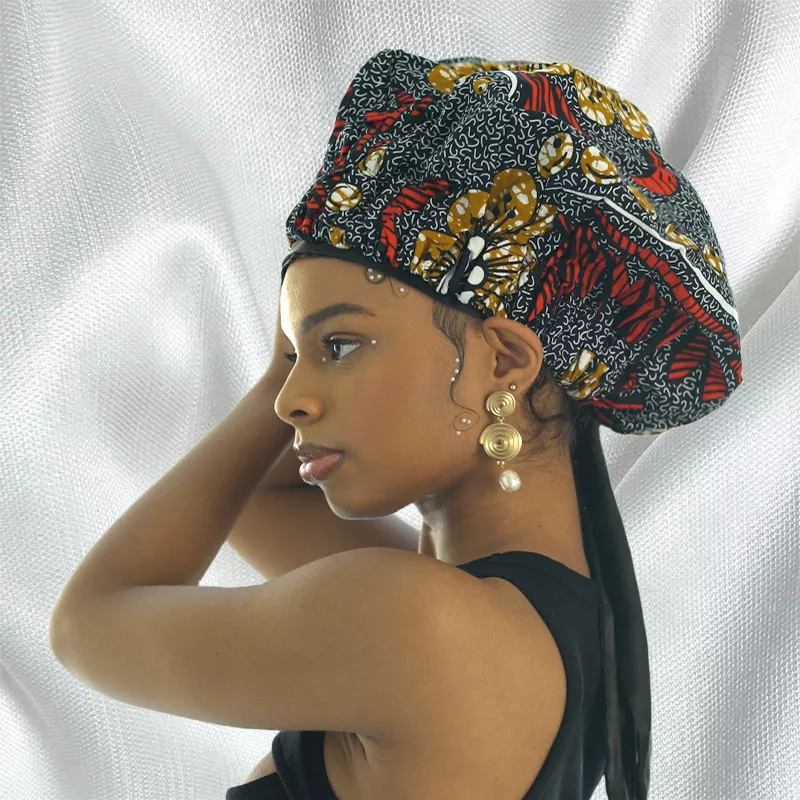
Welcome to Crowned,our new series about the history of Black hair. Hosted by senior social media editor Star Donaldson, Crowned explores the history and traditions that have shaped the Black experience and the hairstyles born out of them. In our newest episode, we deep-dive into the history of bonnets, which have rich cultural significance. Join us in learning more. This series is researched and fact-checked by Christine Forbes and Oluwatobi Odugunwa.
Bonnets, headwraps, head scarves, or head ties—whatever you call them, have been used by Black people for centuries—and are an important part of the Black hair conversation. In the latest episode of Crowned, our host, Star Donaldson, explores the history and importance of bonnets and Black hair. While you might find the hair accessories packaged at your local beauty retailers, bonnets have been around for ages and arent new by any means.
The History
According to Crowneds researchers, bonnets or "sleep caps" go back to the mid-1800s, when European women wore them at night to keep their heads warm. Headwraps were also traditional attire in African regions, like Ghana and Namibia, where people referred to them as dukus and doek, respectively. "How you styled a headwrap reflected wealth, ethnicity, marital status, emotional state, and other facets of identity," Donaldson explains.
Still, despite being functional and culturally significant in the 1800s, headwraps had a grim past. "During enslavement, headwraps and bonnets were weaponized. They were used to visibly distinguish Black women as lesser or even subhuman," Donaldson explains. "In parts of Central America, Black women used the folds in their headscarves to communicate coded messages to one another that enslavers could not understand."
Post-slavery, headwraps were still heavily used by Black women to preserve hair, but the stigma around them remained. According to Crowneds researchers, racially-driven characters (such as Aunt Jemima) reinforced the idea that bonnets are associated with servitude or homeliness. This stigma has only evolved (more on that later).
The Purpose
Despite their equally cultural relevance and dark past, bonnets are a helpful accessory, providing a way to protect your hairstyle. "Most protective hair coverings are made with either satin or silk," Donaldson says. "These textures allow hair to glide easily against the fabric to prevent friction which can cause breakage and split ends." Additionally, bonnets and headscarves help prevent moisture loss, which is critical in maintaining styles (like protective braids, locs, or a silk press).
Like most Black women, I regularly rely on my silk scarf to preserve my hair, so I dont wake up with frizzy, dried strands. If I am wearing a sleek style like a ponytail or bun, I also wrap along my hairline to keep my edges down flat. On days when I am rocking a style like braids or faux locs, I opt for a large bonnet with enough space to house my added length. More than a way to protect my hair, silk scarves and bonnets have been important in my household, and I even keep one that belonged to my late grandmother tucked away in my nightstand. No matter how you wear them (or why), bonnets and similar accessories are important to beauty routines and lives.
The Debate
Today, you have many options for choosing bonnets from different colorways, patterns, textures, and designs. In addition to bonnets and silk scarves, there are other traditional options like durags to protect your hair. Newer innovations like silk-lined caps and hats also provide a way to protect your hair while youre on the go.
Still, theres an active discourse about whether or not bonnets are to be worn publicly or kept at home. In 2021 comedian and actress Monique went viral on Instagram for criticizing women who wear bonnets in public. "When did we step away from let me be presentable when I leave my home?" the actress asked on Instagram, responding to a photo of a woman wearing a bonnet at the airport. "All Im saying is: Could you please comb your hair?"
The video sparked a wildfire debate on social media about whether or not its acceptable for Black women to wear bonnets in public and whether the decision to do so is a direct reflection of self-pride. Ultimately, how, when, and where you wear your bonnet is your choice, and no matter your stance on the subject, theres no denying the value of bonnets—headwraps, headscarves and all—whether youre wearing them for cultural, protective, or styling purposes.
Everything Youve Ever Wanted to Know About The Origin of Laying Baby Hairs